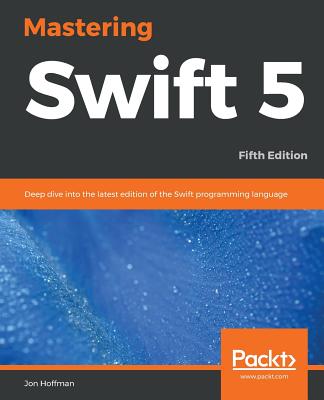Oracle Database 11g R2: Grid Infrastructure & ASM (Paperback)
Sideris
- 出版商: Sideris Courseware
- 出版日期: 2011-05-09
- 售價: $3,910
- 貴賓價: 9.5 折 $3,715
- 語言: 英文
- 頁數: 274
- 裝訂: Paperback
- ISBN: 1936930153
- ISBN-13: 9781936930159
-
相關分類:
Oracle、資料庫
無法訂購
買這商品的人也買了...
-
 深入淺出物件導向分析與設計 (Head First Object-Oriented Analysis and Design)
深入淺出物件導向分析與設計 (Head First Object-Oriented Analysis and Design)$880$695 -
 Thinking in Java 中文版 (Thinking in Java, 4/e)
Thinking in Java 中文版 (Thinking in Java, 4/e)$960$758 -
 電腦軟體應用乙級檢定術科, 2/e
電腦軟體應用乙級檢定術科, 2/e$380$300 -
 一線架構師實踐指南-中大型系統架構設計指南
一線架構師實踐指南-中大型系統架構設計指南$500$395 -
 SQL Server 2008 資料庫開發實戰
SQL Server 2008 資料庫開發實戰$850$723 -
 雲端運算大解密
雲端運算大解密$520$416 -
 站長親授!WordPress 3.0 部落格架站十堂課
站長親授!WordPress 3.0 部落格架站十堂課$420$357 -
 jQuery 實戰手冊 (jQuery in Action, 2/e)
jQuery 實戰手冊 (jQuery in Action, 2/e)$520$411 -
 Photoshop 影像密碼-不存在主義
Photoshop 影像密碼-不存在主義$880$748 -
 Google Android SDK 開發範例大全, 3/e
Google Android SDK 開發範例大全, 3/e$950$808 -
 jQuery 錦囊妙計 (jQuery Cookbook)
jQuery 錦囊妙計 (jQuery Cookbook)$680$537 -
 SQL 學習手冊, 2/e (Learning SQL, 2/e)
SQL 學習手冊, 2/e (Learning SQL, 2/e)$620$490 -
 一定要學會的 HTML5 + CSS3 網頁設計實作應用
一定要學會的 HTML5 + CSS3 網頁設計實作應用$450$351 -
 Android 平板進化活用技
Android 平板進化活用技$220$187 -
 Eclipse 完全攻略-從基礎 Java 到 PDE 外掛開發
Eclipse 完全攻略-從基礎 Java 到 PDE 外掛開發$600$468 -
 Google Android 應用程式開發實戰, 3/e (適用 Android SDK 2.x/3.x)
Google Android 應用程式開發實戰, 3/e (適用 Android SDK 2.x/3.x)$680$537 -
 Visual Basic 2010 資料庫程式設計暨進銷存系統實作
Visual Basic 2010 資料庫程式設計暨進銷存系統實作$650$514 -
 slide ology 中文版|視覺溝通:讓簡報與聽眾形成一種對話 (slide:ology: The Art and Science of Creating Great Presentations)
slide ology 中文版|視覺溝通:讓簡報與聽眾形成一種對話 (slide:ology: The Art and Science of Creating Great Presentations)$450$356 -
 輕鬆學 Objective C-開發你的 iPhone/iPad 應用程式
輕鬆學 Objective C-開發你的 iPhone/iPad 應用程式$490$417 -
 測試之美-領略頂尖專家改善軟體的測試法則 (Beautiful Testing: Leading Professionals Reveal How They Improve Software)
測試之美-領略頂尖專家改善軟體的測試法則 (Beautiful Testing: Leading Professionals Reveal How They Improve Software)$580$458 -
 Tapworthy:打造完美的 iPhone 應用程式
Tapworthy:打造完美的 iPhone 應用程式$580$458 -
 iPhone 數位相機程式開發應用集
iPhone 數位相機程式開發應用集$560$437 -
 Android 3D 遊戲開發技術詳解
Android 3D 遊戲開發技術詳解$680$537 -
Google App Inventor 開發手冊-不會寫程式也能設計你的 APP
$520$442 -
 Java 分散式處理實務精要:奠定雲端基礎的 63 個思考術
Java 分散式處理實務精要:奠定雲端基礎的 63 個思考術$490$382
商品描述
This Oracle 11g training course provides a step-by-step guide for configuring and using the Oracle Grid Infrastructure in a single server environment, and it forms the basis for expanding this infrastructure to a clustered server configuration. Advanced database and storage administration tasks are considered, including Oracle Restart and Automatic Storage Management (ASM). With this course you will learn about: - Preparing a host system for the Grid Infrastructure and Oracle RDBMS installations and performing those installations; - Preparing a host system for ASM storage management; - Partitioning and configuration of storage devices for ASM storage on both Linux and MS Windows servers; - Utilizing Oracle Restart for automatic sequencing and restarting of Oracle software components; - Obtain an introduction to Oracle High-Availability Services including the Server Control and Clusterware Control utilities; - Review the Oracle server stack architecture including operating system virtualization and storage subsystem virtualization layers; - Using ASM for storage of some or all database files, thereby providing a database-centric and optimized storage and volume manager; - Exploiting ASM storage from the Database Configuration Assistant (DBCA), Database Upgrade Assistant (DBUA) and the Enterprise Manager (EM) interface; - Administration of an ASM instance and management of ASM disk groups; - Implement advanced storage capabilities including Intelligent Data Placement, Highcapacity disk drives and access control privileges; - Manage storage systems using the ASM Configuration Assistant (ASMCA) and the ASM command-line interface (ASMCMD); - Migrate a database from traditional file system storage to ASM storage; - Monitoring performance and throughput of ASM devices.































